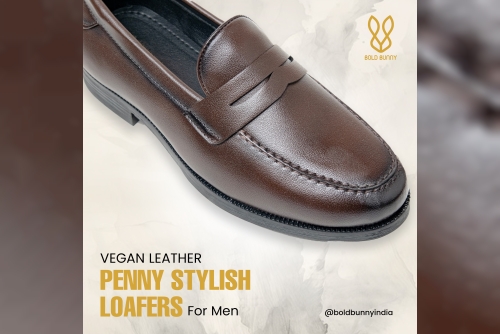A baby car seat is one of the most important investments parents make to ensure the safety and comfort of their child during car rides. However, like all essential baby gear, it requires regular cleaning and maintenance to keep it in good condition and to extend its lifespan. From inevitable spills to dirt and germs, car seats can get dirty quickly, which not only affects their appearance but can also impact their performance over time. Here’s a comprehensive guide on how to clean and maintain your baby car seat to ensure long-term use and durability.
1. Why Regular Cleaning and Maintenance is ImportantMaintaining your baby’s car seat isn’t just about aesthetics—it’s about safety. Dirt, debris, and food particles can interfere with the harness system or the seat’s moving parts, reducing its effectiveness during an accident. Additionally, keeping the car seat clean helps protect your child from harmful bacteria and allergens that may accumulate over time.
By regularly cleaning and inspecting the seat, you can:
Ensure the seat’s functionality: A clean seat operates as it should, especially the harness and locking mechanisms.
Extend its lifespan: Proper maintenance reduces wear and tear, allowing you to use the seat for years or even pass it on to another child.
Promote your baby’s health: Clean seats reduce the risk of allergies, skin irritations, and exposure to germs.
Keep it looking new: A well-maintained seat maintains its original appearance, which is great for resale or future use.
2. Step-by-Step Guide to Cleaning Your Baby Car SeatStep 1: Consult the Manufacturer’s ManualBefore you begin cleaning, it’s important to consult your car seat’s manual. Each brand and model may have specific cleaning instructions to prevent damage. Some car seats have removable, machine-washable covers, while others require hand washing or spot cleaning.
Step 2: Remove the Car Seat from the VehicleTake the car seat out of the vehicle and place it in a clean, open space where you can work comfortably. This will give you better access to all parts of the seat and prevent dirt from getting into your car.
Step 3: Vacuum Loose Crumbs and DebrisUse a handheld vacuum or the brush attachment of a larger vacuum to remove any loose dirt, crumbs, or debris from the seat. Be sure to get into the crevices, around the buckles, and under the padding where food and dirt tend to accumulate.
Step 4: Wipe Down Plastic PartsWith a damp cloth, wipe down all the plastic parts of the seat, including the base, armrests, and any other hard surfaces. You can use a mild soap solution if needed, but avoid using harsh chemicals or abrasive cleaners that can weaken the plastic or affect its integrity.
Step 5: Clean the Harness and BucklesThe harness system and buckles are key to your child’s safety, so it’s crucial to clean them thoroughly. Most manufacturers recommend cleaning the harness with a damp cloth and mild soap, but avoid submerging the straps in water or using harsh detergents, as this can compromise the strength of the material.
For the buckles, you can use a soft brush to remove any stuck-on debris. Submerge only the buckle (not the straps) in warm water to remove stubborn particles. Allow the buckle to air-dry completely before reassembling.
Step 6: Wash the Seat CoverIf your car seat cover is machine washable, remove it according to the manufacturer’s instructions. Use a mild detergent and wash on a gentle cycle. Air drying is generally recommended to prevent shrinkage or damage to the fabric.
If the cover is not machine-washable, use a damp cloth and mild soap to spot clean any stains or spills. Avoid using bleach or strong cleaners, as these can degrade the fabric over time.
Step 7: Clean the Foam PaddingSome car seats have foam padding that provides extra comfort and protection. Check the manual for cleaning instructions, as some foam materials are not washable. If allowed, you can gently spot clean the foam with a damp cloth, but never submerge it in water, as this can affect its performance.
Step 8: Air Dry EverythingOnce you’ve cleaned all the parts of the car seat, allow everything to air dry thoroughly. Avoid using a dryer or direct sunlight, as this can damage the fabric or cause plastic parts to warp. Make sure the harness, buckles, and seat cover are completely dry before reassembling.
Step 9: Reassemble the Car SeatOnce all parts are dry, carefully reassemble the car seat according to the manufacturer’s instructions. Double-check that the harness is properly threaded, the cover is securely in place, and the buckles function correctly.
3. Tips for Maintaining Your Baby Car SeatRegular InspectionsPerform regular inspections of your baby car seat to ensure that it’s in good working condition. Check for any signs of wear and tear, such as frayed harnesses, loose buckles, or damaged plastic. If any part looks damaged, contact the manufacturer for replacement parts.
Avoid Direct SunlightProlonged exposure to direct sunlight can cause fading and deterioration of the fabric and plastic parts. When not in use, try to keep the car seat covered or stored in a shaded area.
Protect the Seat from SpillsUsing a seat protector under the car seat can help prevent spills from seeping into the car upholstery. Additionally, placing a towel or absorbent pad beneath your baby can catch most spills, making cleanup easier.
Replace the Seat After an AccidentIf your vehicle has been in a moderate or severe accident, it’s recommended to replace the baby car seat, even if it doesn’t show any visible signs of damage. The impact may have compromised the seat’s integrity.
Store It Properly When Not in UseIf you plan to store the car seat for future use, make sure it’s clean and stored in a dry, cool place. Avoid storing it in areas where it could be exposed to moisture or pests, which can damage the fabric and plastic over time.
4. The Lifespan of a Baby Car SeatMost car seats come with an expiration date, usually ranging between six and ten years. Over time, the materials can degrade, especially if exposed to harsh conditions. Be sure to check the expiration date on your car seat and replace it as needed, especially if you plan to use it for multiple children.
ConclusionCleaning and maintaining your baby’s car seat is essential for ensuring long-term use and safety. By following proper cleaning techniques and performing regular maintenance, you can protect your investment and, most importantly, keep your baby safe and comfortable during every car ride. Regular upkeep will also ensure that your car seat remains in excellent condition for future use, whether for another child or resale.












 Rent A Cozy Fully Furnished Two Room Apartment in Bashundhara R/A
Rent A Cozy Fully Furnished Two Room Apartment in Bashundhara R/A